 W
WThe 1st Division was an infantry division in the Imperial Japanese Army. Its call sign was the Jade Division . The 1st Division was formed in Tokyo in January 1871 as the Tokyo Garrison , one of six regional commands created in the fledgling Imperial Japanese Army. The Tokyo Garrison had responsibility for the eastern region of Honshū, centered on the Tokyo metropolitan area. The six regional commands were transformed into divisions under the army reorganization of 14 May 1888, based on recommendations by the Prussian military advisor Jakob Meckel to the Japanese government.
 W
WThe 2nd Division was an infantry division in the Imperial Japanese Army. Its tsūshōgō was Courageous Division .
 W
WThe 3rd Division was an infantry division in the Imperial Japanese Army. Its call sign was the Kō-heidan (幸兵団).
 W
WThe 4th Division was an infantry division in the Imperial Japanese Army. Its call-sign was Yodo Division .
 W
WThe '5th Division' was an infantry division of the Imperial Japanese Army. Its call sign was the Koi (Carp) Division . The 5th Division was formed in Hiroshima in January 1871 as the Hiroshima Garrison , one of six regional commands created in the fledgling Imperial Japanese Army. Its personnel were drafted from Hiroshima, Yamaguchi and Shimane.
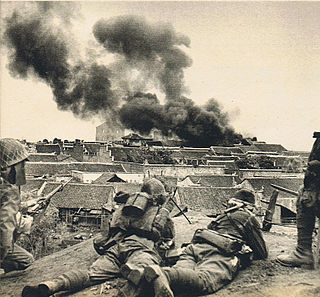 W
WThe 6th Division was an infantry division in the Imperial Japanese Army. Its call sign was the Bright Division .
 W
WThe 8th Division was an infantry division in the Imperial Japanese Army. It was formed 1 October 1898 in Hirosaki, Aomori, as one of the six new reserve divisions created after the First Sino-Japanese War and was annihilated in the Philippines during the Pacific War at Rodriguez, Rizal in 1945. Its Tsūshōgō was Sugi . The 8th Division consisted of troops from the Tōhoku region of Japan, primarily Aomori, Akita and Yamagata Prefectures. Its first commander was General Tatsumi Naofumi, formerly commander of the Sendai Garrison.
 W
WThe 9th Division was an infantry division in the Imperial Japanese Army. Its tsūshōgō code name was the Warrior Division or 1515 or 1573. The 9th Division was one of six infantry divisions newly raised by the Imperial Japanese Army after the First Sino-Japanese War (1894–1895). Its troops were recruited primarily from communities in the Hokuriku region of Japan (Ishikawa, Toyama and Fukui, with its headquarters located within the grounds of Kanazawa Castle.
 W
WThe 10th Division was an infantry division in the Imperial Japanese Army. Its tsūshōgō code name was the Iron Division . The 10th Division was one of six new infantry divisions raised by the Imperial Japanese Army in the aftermath of the First Sino-Japanese War, 1 October 1898. Its troops were recruited primarily from communities in the three prefectures of Hyōgo, Okayama and Tottori, plus a portion of Shimane. It was originally headquartered in the city of Himeji, and its first commander was Lieutenant General Prince Fushimi Sadanaru.
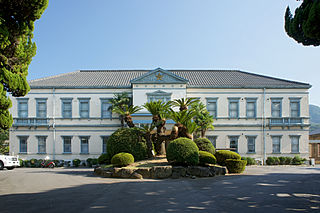 W
WThe 11th Division was an infantry division in the Imperial Japanese Army. Its tsūshōgō code name was the Brocade Division , and its military symbol was 11D. The 11th Division was one of six infantry divisions newly raised by the Imperial Japanese Army after the First Sino-Japanese War (1894–1895). The division received its colors on 1 October 1898 and was disbanded in September 1945. Its troops were recruited primarily from communities in the four prefectures of the island of Shikoku. It was originally headquartered in the city of Zentsuji, Kagawa, and its first commander was Lieutenant General Nogi Maresuke.
 W
WThe 12th Division was an infantry division in the Imperial Japanese Army. Its tsūshōgō code name was the Sword Division , and its military symbol was 12D. The 12th Division was one of six new infantry divisions raised by the Imperial Japanese Army after the First Sino-Japanese War (1894–1895). The division received its colors on 1 October 1898 and disbanded in September 1945. Its troops were recruited primarily from communities in the northern portion of the island of Kyūshū and it was originally headquartered within Kokura Castle
 W
WThe 13th Division was an infantry division in the Imperial Japanese Army. Its tsūshōgō code name was the Mirror Division , and its military symbol was 13D. The 13th Division was one of four new infantry divisions raised by the Imperial Japanese Army (IJA) in the closing stages of the Russo-Japanese War 1 April 1905, after it turned out what the entire IJA was committed to combat in Manchuria, leaving not a single division to guard the Japanese home islands from attack.
 W
WThe 14th Division was an infantry division in the Imperial Japanese Army. Its tsūshōgō code name was the Shining Division , and its military symbol was 14D. The 14th Division was one of four new infantry divisions raised by the Imperial Japanese Army (IJA) in the closing stages of the Russo-Japanese War, after it turned out that the entire IJA was committed to combat in Manchuria, leaving not a single division to guard the Japanese home islands from attack.
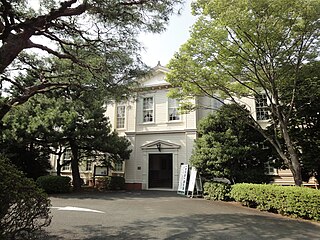 W
WThe 15th Division was an infantry division in the Imperial Japanese Army. Its tsūshōgō code name was the Festival Division , and its military symbol was 15D. The 15th Division was one of four new infantry divisions raised by the Imperial Japanese Army in the closing stages of the Russo-Japanese War (1904–1905). With Japan's limited resources towards the end of that conflict, the entire IJA was committed to combat in Manchuria, leaving not a single division to guard the Japanese home islands from attack. The 15th Division was initially raised from men in the area surrounding Nagoya under the command of Lieutenant General Okihara Kofu.
 W
WThe 16th Division was an infantry division in the Imperial Japanese Army. Its tsūshōgō code name was the Wall Division , and its military symbol was 16D. The 16th Division was one of four new infantry divisions raised by the Imperial Japanese Army in the closing stages of the Russo-Japanese War (1904–1905). With Japan's limited resources towards the end of that conflict, the entire IJA was committed to combat in Manchuria, leaving not a single division to guard the Japanese home islands from attack. The 16th Division was initially raised from men in the area surrounding Kyoto 18 July 1905 under the command of Lieutenant General Yamanaka Nobuyoshi.
 W
WThe 17th Division was an infantry division in the Imperial Japanese Army. Its tsūshōgō code name was the Moon Division . The 17th Division was one of two infantry divisions raised by the Imperial Japanese Army immediately after the Russo-Japanese War (1904–1905). The division received its colors on 13 November 1907. Its original headquarters was in a suburb of the city of Okayama, and its troops were recruited primarily from communities in the three prefectures of Okayama, Hiroshima, and Shimane. The first commander of the division was Lieutenant General Ichinohe Hyoe.
 W
WThe 18th Division was an infantry division of the Imperial Japanese Army. Its tsūshōgō code name was the Chrysanthemum Division . The 18th Division was one of two infantry divisions newly raised by the Imperial Japanese Army immediately after the Russo-Japanese War (1904–1905) as part of the post war expansion of the standing Japanese military. The division received its colors on 13 November 1907. Its original headquarters was in a suburb of the city of Kurume in Fukuoka Prefecture.
 W
WThe 19th Division was an infantry division in the Imperial Japanese Army. Its tsūshōgō code name was the Tiger Division . It was also occasionally referred to in Korean accounts as Ranam Division, after the location of its main base. The 19th Division and the 20th Division were both raised as a garrison force for Korea. After Japan's victory in the Russo-Japanese War of 1904-1905, and subsequent occupation, and then annexation of Korea in 1910, the need was felt for a dedicated garrison force, raised from people with local knowledge. The 19th Division was stationed in far northeast Korea, in what is now North Hamgyong Province. The division received its colors on 24 December 1915 and headquarters have moved to Yongsan District 16 April 1916; however, the division was not considered combat-ready until 1918. The delay was due to limited funding available for the division to build its facilities in Korea and the need to recruit and train personnel from mainland Japan. In addition, the new division was beset with problems related to malaria and shigellosis at its main base at Ranam in northern Korea, having recorded 672 disease-related officers casualties during 1917. As result, the headquarters have moved to Ranam-guyok only 10 April 1919. The first commander of the 19th Division was Lieutenant General Tachibana Koichirō.
 W
WThe 20th Division was an infantry division in the Imperial Japanese Army. Its tsūshōgō code name was the Morning Division .
 W
WThe 33rd Division was an infantry division of the Imperial Japanese Army. Its call sign was the Bow Division . The 33rd Division was raised in Utsunomiya, Tochigi prefecture, simultaneously with 32nd, 34th, 35th, 36th and 37th Divisions. Its headquarters were initially in Sendai. It was raised from conscripts largely from the northern Kantō prefectures of Tochigi, Ibaraki and Gunma.
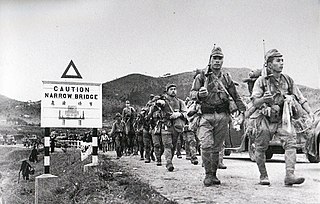 W
WThe 38th Division was an infantry division of the Imperial Japanese Army, activated 30 June 1939 in Nagoya, simultaneously with the 39th, 40th and 41st Divisions. Its call sign was the Swamp Division .
 W
WThe 42nd Division was an infantry division of the Imperial Japanese Army. Its call sign was the Distinction Division
 W
WThe 44th Division was an infantry division of the Imperial Japanese Army. Its call sign was the Orange Division
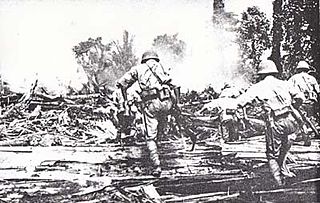 W
WThe 51st Division was an infantry division of the Imperial Japanese Army. Its call sign was the Base Division . It was formed on 10 July 1940 at Utsunomiya, Tochigi, simultaneously with 52nd, 54th, 55th, 56th, and 57th divisions. The 51st Division was initially assigned to the Eastern District Army and placed under command of Lieutenant General Kenichiro Ueno.
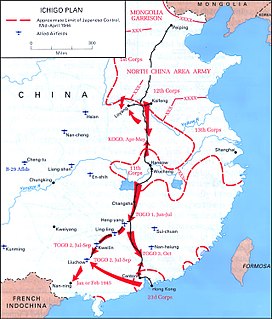 W
WThe 68th Division was an infantry division of the Imperial Japanese Army. Its call sign was the Cypress Division . It was formed on 2 February 1942 in Jiujiang city as a class C (security) division, simultaneously with the 69th and 70th divisions. The backbone of security division has consisted of the eight independent infantry battalions, and it does not have an artillery regiment. The nucleus for the formation was the 14th Independent mixed brigade.
 W
WThe 84th Division was an infantry division in the Imperial Japanese Army. Its call sign was the Sudden Division .It was created July 6 1944 in Himeji. It was a triangular division. The divisional backbone was the 54th Division headquarters.
 W
WThe 102nd Division was an infantry division of the Imperial Japanese Army. Its call sign was the Uproot Division .The division was formed on 15 June 1944 in Visayas. The nucleus of the formation was the 31st Independent Mixed Brigade. The 102nd division was a Type C(hei) security division, therefore the division backbone comprised independent infantry battalions instead of infantry regiments.
 W
WThe 116th Division was an infantry division of the Imperial Japanese Army. Its call sign was Storm Division . It was formed on 15 May 1938 in Kyoto as a B-class square division, simultaneously with the 106th Division. The nucleus for the formation was the 16th Division headquarters. The division was originally subordinated to the Central China Expeditionary Army.